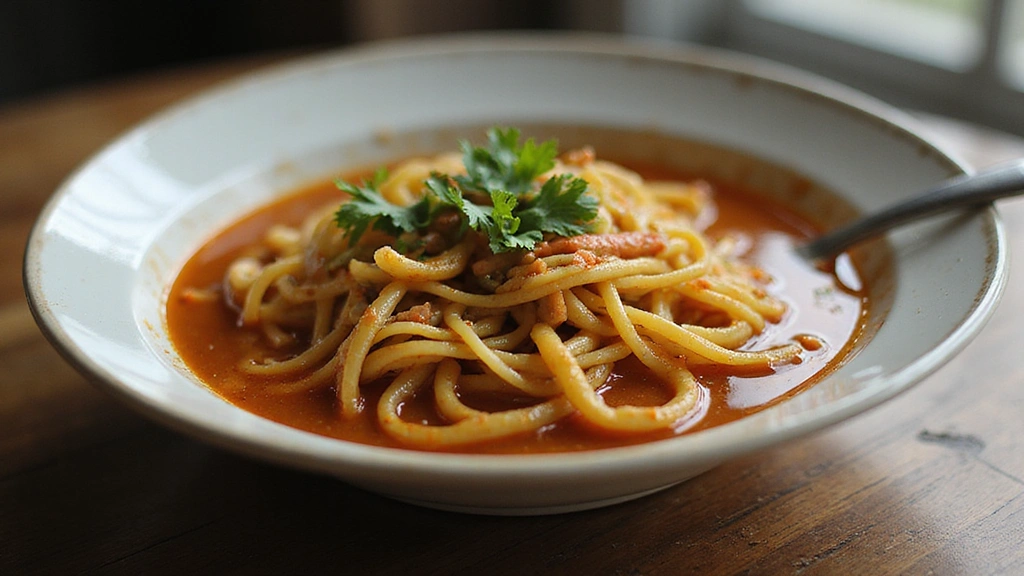This Easy Chinese Noodle Soup brings together the comforting warmth of homemade broth and the delightful chewiness of noodles to create a dish that soothes the soul.
The vibrant flavors of ginger, garlic, and fresh vegetables meld beautifully, creating a bowl that is both nourishing and satisfying.
I first experienced this dish during a chilly winter evening in a small noodle shop in Beijing, where the steam rose from the bowls like a warm hug.
Whether you’re feeling under the weather or simply seeking a cozy meal, this noodle soup is sure to bring joy to your dining table.
The History and Cultural Significance
• Chinese Noodle Soup traces its origins to the Northern regions of China, where wheat noodles became a staple due to the climate.
• The dish evolved over centuries, incorporating local ingredients and flavors, which led to the many regional variations we enjoy today.
• In Chinese culture, noodle soup is often served during celebrations like birthdays, symbolizing longevity and prosperity.
• While many variations exist across different regions, the authentic version maintains hand-pulled noodles and a rich, flavorful broth that sets it apart from imitations.
Recipe Overview
Nutritional Information (per serving)
Ingredients
Essential Equipment Guide
Large Pot: A sturdy, large pot is essential for making the broth, allowing for even heating and ample space for ingredients. Look for one with a thick base to prevent scorching.
Colander: A colander is crucial for draining the noodles after cooking. Choose one with small holes to prevent the noodles from slipping through.
Wooden Spoon: A wooden spoon helps in stirring the broth without scratching the pot. It’s also good for tasting and adjusting seasoning.
Preparation Methods
Making Broth: Start by simmering the broth with ginger and garlic to infuse flavor. This step is crucial as it forms the foundation of the soup. Make sure to let it simmer for at least 15 minutes to allow all the flavors to meld.
Cooking Noodles: Boil the noodles separately according to package instructions. This ensures they are perfectly cooked and prevents them from becoming mushy in the broth. After cooking, rinse them under cold water to stop the cooking process and keep them firm.
Preparing Vegetables: Chop the vegetables evenly to ensure they cook uniformly. This technique not only improves presentation but also ensures that each bite has a balanced flavor profile.
Step 1: Prepare Broth

In a large pot, combine the chicken or vegetable broth with sliced ginger and minced garlic.
Bring the mixture to a gentle simmer over medium heat.
Let it simmer for about 15 minutes to infuse the flavors.
Taste the broth and adjust seasoning with soy sauce as desired.
Step 2: Cook Noodles
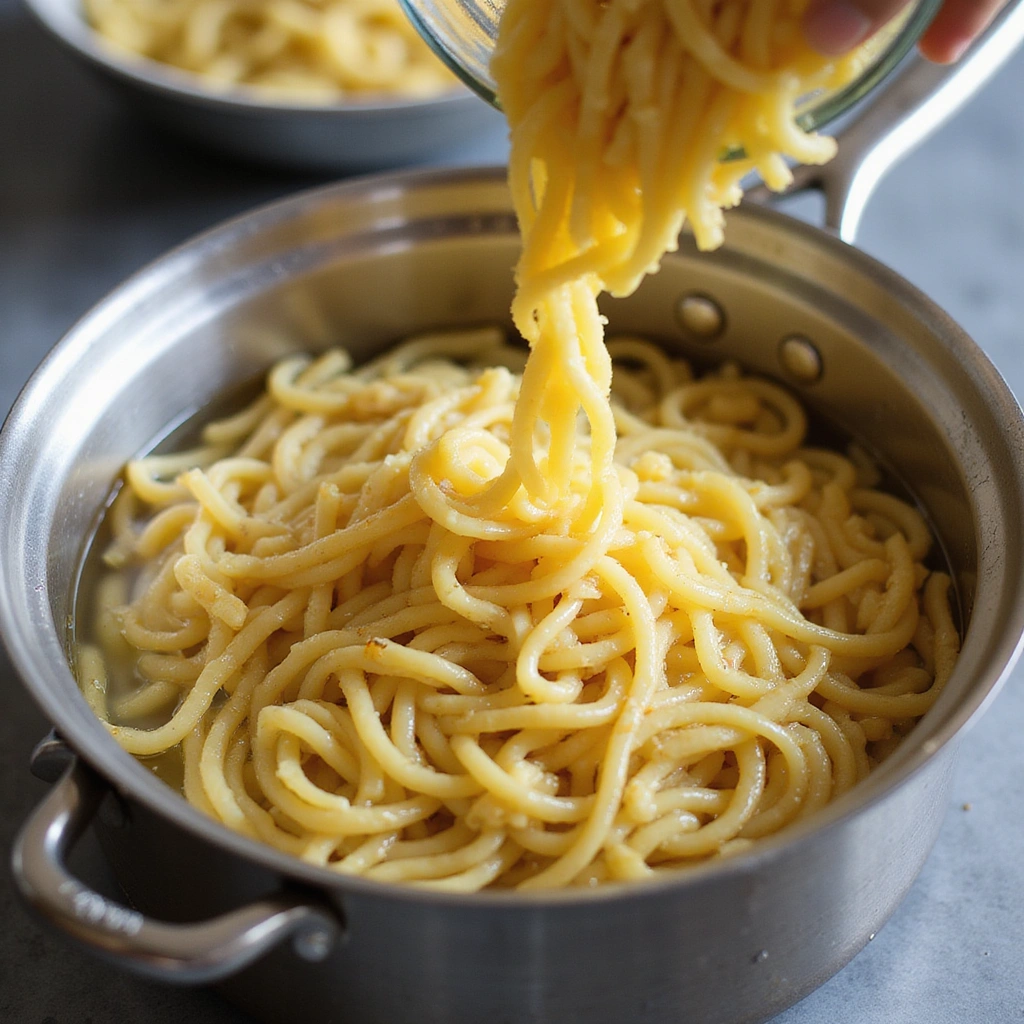
While the broth is simmering, bring a separate pot of water to a boil.
Add the fresh egg noodles and cook according to package instructions, usually around 3-4 minutes.
Once cooked, drain the noodles in a colander and rinse them under cold water to prevent sticking.
Set aside for later use in the soup.
Step 3: Prepare Vegetables
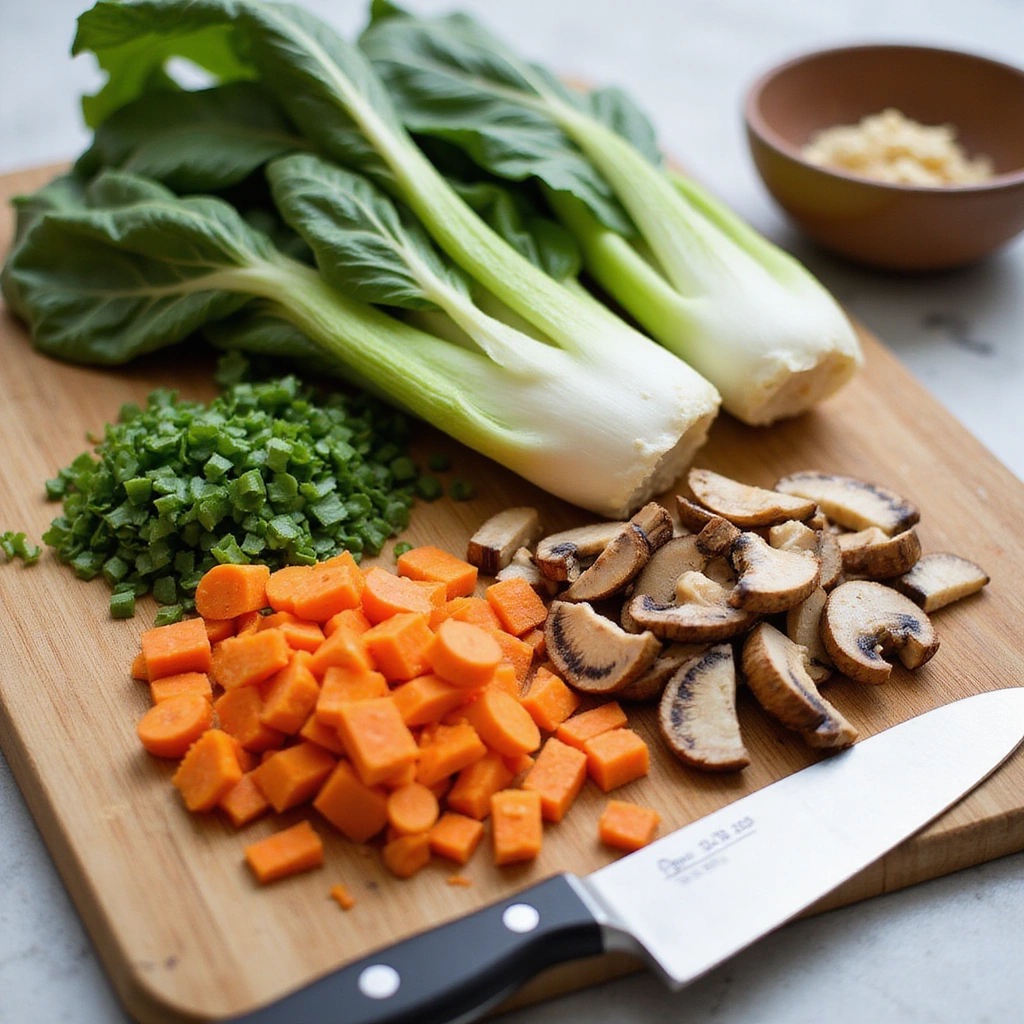
Chop the bok choy, carrot, and shiitake mushrooms into bite-sized pieces.
Make sure all pieces are uniform for even cooking.
Set the prepared vegetables aside until the broth is ready.
This step ensures a colorful and balanced soup.
Step 4: Combine Ingredients
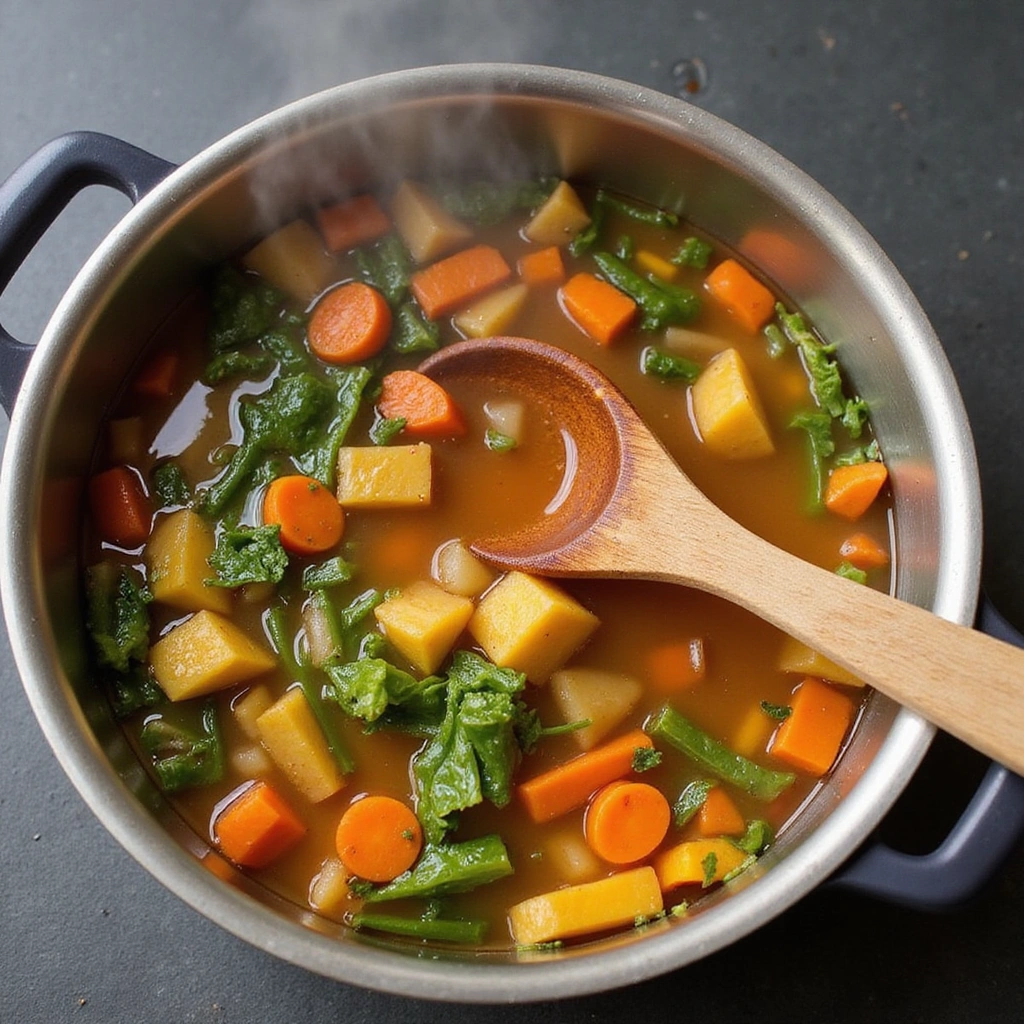
Once the broth has simmered, add the prepared vegetables to the pot.
Stir gently and let them cook for about 5-7 minutes until tender.
Check the vegetables for doneness; they should be soft but not mushy.
This step enhances the broth with fresh flavors and nutrients.
Step 5: Assemble the Soup

In serving bowls, place a portion of the cooked noodles at the bottom.
Ladle the hot broth and vegetables over the noodles until fully submerged.
Ensure each bowl has a good balance of noodles and broth.
This layering adds depth to the presentation and flavor.
Step 6: Add Garnishes
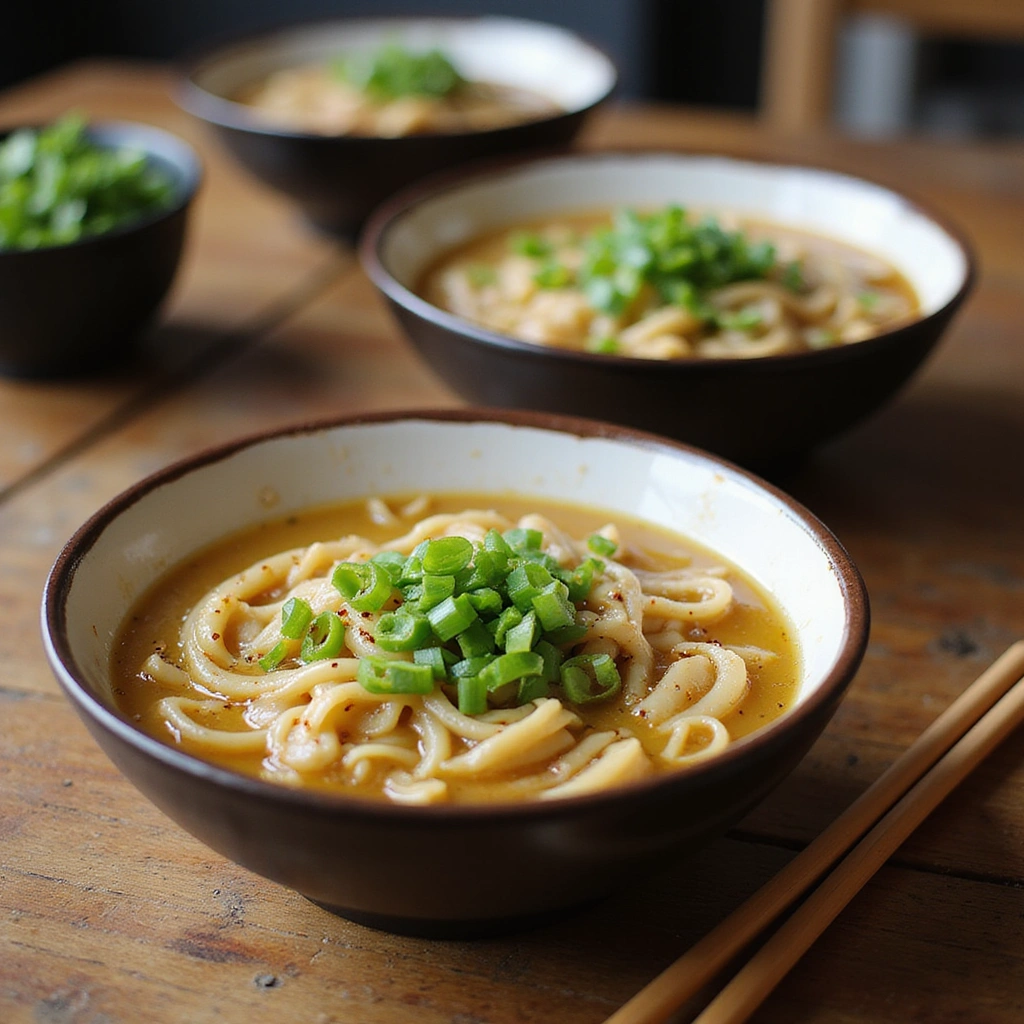
Finish each bowl with a drizzle of sesame oil and a sprinkle of sliced green onions.
This adds a final burst of flavor and freshness.
Serve immediately while hot, allowing diners to enjoy the warm aromas.
The presentation should look appetizing and inviting.
Critical Timing and Temperature Guide
Simmering Broth: Simmer the broth for at least 15 minutes to extract the ginger and garlic flavors. Look for a gentle bubbling rather than a rolling boil to prevent bitterness.
Cooking Noodles: Cook fresh noodles for 3-4 minutes in boiling water. They should be al dente; overcooking will lead to mushiness, so keep an eye on them.
Vegetable Doneness: Vegetables should be tender yet crisp after 5-7 minutes in the broth. Overcooked vegetables will lose their color and texture, so taste for readiness.
Pro Tips for Chinese Noodle Soup Recipe Warm And Comforting
• Ingredient Selection: Use fresh, high-quality noodles and seasonal vegetables for the best flavor and texture.
• Preparation Secret: Rinse cooked noodles under cold water to prevent them from sticking together and becoming mushy in the broth.
• Temperature Management: Ensure your broth is hot but not boiling when adding vegetables to maintain their integrity and vibrant colors.
• Texture Enhancement: For a richer broth, consider adding a splash of fish sauce or miso for umami depth.
• Flavor Layering: Add the soy sauce gradually, tasting as you go to achieve the desired flavor profile without overpowering the broth.
• Make-Ahead Strategies: Prepare the broth and chop vegetables in advance, storing them separately in the fridge for up to 2 days.
• Restaurant-Quality Finishing Touches: A sprinkle of toasted sesame seeds or fresh cilantro can elevate the soup’s presentation and flavor.
• Equipment Optimization: A heavy-bottomed pot is ideal to prevent scorching the broth and allows for even heat distribution.
Troubleshooting Common Issues
• Broth Lacks Depth: If your broth tastes flat, consider simmering it longer to extract more flavors from the ingredients. Adding a bit more soy sauce or fish sauce can also enhance the umami.
• Noodles Overcooked: If the noodles become mushy, try cooking them separately next time and adding them just before serving.
• Vegetables Too Soft: Ensure you add the vegetables at the right time to maintain their crispness. If overcooked, you can prevent this by quickly blanching them in hot water before adding to the broth.
• Flavor Too Salty: If the soup turns out too salty, balance it with a splash of vinegar or a bit of sugar.
• Too Thick: If your soup is too thick, simply add more broth or water to reach your desired consistency.
• Not Enough Vegetables: Adjust quantities based on preference, ensuring a hearty mix for each serving.
Variations and Regional Differences
• Sichuan Style: This version incorporates spicy chili oil and Sichuan peppercorns for a kick, making the soup fiery and flavorful.
• Cantonese Style: Features wontons or dumplings added to the broth, offering a rich texture and added protein.
• Vegetarian Variation: Substitute the chicken broth with a robust vegetable broth and add tofu for protein.
• Modern Interpretations: Incorporate trendy ingredients like zucchini noodles or quinoa for a healthier, gluten-free alternative.
Food Science Behind the Recipe
• Umami Flavor: The combination of soy sauce and broth creates a rich umami flavor, essential for a satisfying soup. Understanding how to balance these flavors is key to a delicious broth.
• Maillard Reaction: If you choose to sauté any of the vegetables before adding them to the broth, the Maillard reaction will enhance their flavors, creating a deeper, more complex taste.
• Gelatinization: Using a good-quality broth that includes bones can lead to gelatinization, which gives the soup a luxurious mouthfeel and enhances the overall texture.
Frequently Asked Questions
What’s the most common mistake people make when preparing noodle soup? One common mistake is overcooking the noodles, which can make them mushy. Always cook them separately and add just before serving for the best texture.
Can I prepare components of this dish in advance? Yes, you can make the broth and chop vegetables ahead of time. Store them separately in the fridge for up to 2 days to maintain freshness.
How do I adapt this recipe for dietary restrictions? For gluten-free options, use rice noodles and ensure your broth is gluten-free. For vegetarian diets, substitute chicken broth with vegetable broth and add tofu.
What’s the best way to store and reheat leftovers? Store leftovers in an airtight container in the fridge for up to 3 days. Reheat in a pot over medium heat, adding a splash of water or broth to maintain moisture.
Can I freeze this dish? Yes, you can freeze the broth and vegetables separately. Noodles can become mushy when frozen, so it’s best to cook them fresh when you reheat the soup.
What wine or beverages pair best with this dish? A light, crisp white wine like Sauvignon Blanc complements the flavors of the soup beautifully.
How can I scale this recipe up for a crowd? Simply double or triple the ingredients, making sure to adjust cooking times for the broth and noodles accordingly.
What side dishes complement this recipe best? Spring rolls or dumplings make excellent accompaniments, providing a nice contrast in texture and flavor.
How do professional chefs elevate this dish for restaurant service? Chefs might use homemade broth, artisanal noodles, and a variety of gourmet garnishes like microgreens or edible flowers.
Serving and Presentation Guide
• Traditional Presentation: Serve the noodle soup in deep bowls with a variety of toppings arranged artfully on top. Use a garnish of green onions and a drizzle of sesame oil for a classic look.
• Modern Plating Ideas: Consider using clear glass bowls to showcase the vibrant colors of the soup, with toppings layered neatly for visual appeal.
• Accompaniment Suggestions: Pair the soup with a side of pickled vegetables or a light salad to enhance the meal’s freshness.
• Special Occasion Presentation: For celebrations, serve in individual ramekins with a side of gourmet dipping sauces to elevate the experience.
Conclusion
I hope you give this Easy Chinese Noodle Soup a try on your next cozy night in.
It’s a simple yet flavorful dish that can easily become a family favorite.
Enjoy the warmth and comfort it brings, and don’t forget to share your experience with loved ones!

